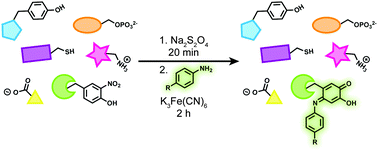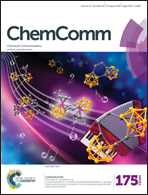Direct detection of nitrotyrosine-containing proteins using an aniline-based oxidative coupling strategy†
Abstract
A convenient two-step method is described for the detection of nitrotyrosine-containing proteins. First, nitrotyrosines are reduced to aminophenols using sodium dithionite. Following this, an oxidative coupling reaction is used to attach anilines bearing fluorescence reporters or affinity probes. Features of this approach include fast reaction times, pmol-level sensitivity, and excellent chemoselectivity.


 Please wait while we load your content...
Please wait while we load your content...